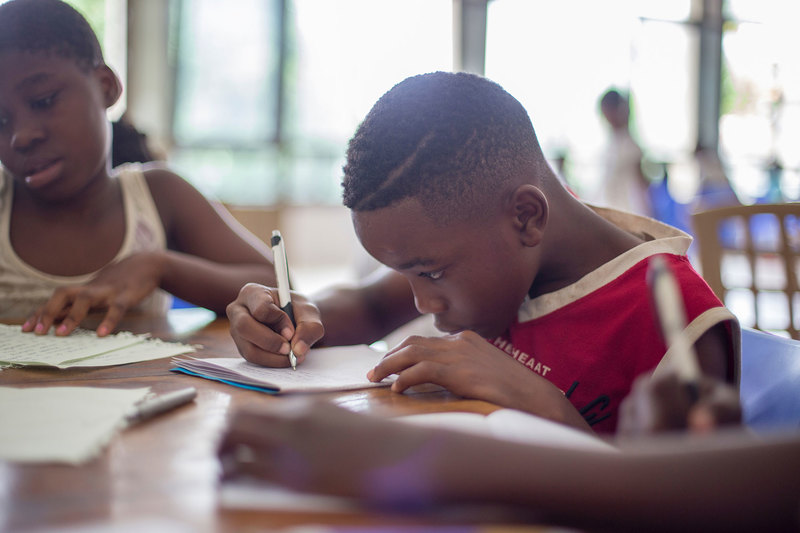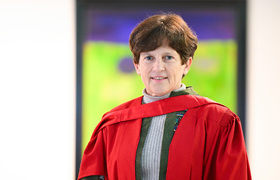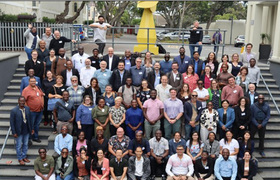Multilingual classrooms boost learning
03 March 2020 | Story Louise Albertyn and Xolisa Guzula. Photo Unsplash. Read time 6 min.
Just 23% of South Africans identify English or Afrikaans as their home language, yet 100% of children are expected to navigate their school years in these languages exclusively. This is hampering learning and comprehension and probably fuelling high dropout rates in our schools. It needs to be addressed as a learning and social justice imperative. This according to Louise Albertyn, senior adviser to the Bertha Centre for Social Innovation and Entrepreneurship at the University of Cape Town (UCT) Graduate School of Business (Education Innovation portfolio), and Xolisa Guzula, a lecturer with the UCT School of Education.
One of the key takeaways from President Cyril Ramaphosa’s 2020 State of the Nation Address is the crisis of youth unemployment. According to the latest StatsSA report, a staggering half of those aged between 15 and 24 do not have jobs. In his speech, the President pledged 1% of the country’s Budget to address this through skills and jobs training, as well as entrepreneurial programmes and support, targeted at finding employment for these youths.
He didn’t say anything about the role of education in all of this, or about the potential link between failure and high dropout rates in our schools and youth unemployment. Instead, he focused on the positive news of the 81% matric pass rate in 2019.
We are all desperate for a bit of good news, so it’s understandable that President Cyril Ramaphosa wanted to highlight that, but for those working in education, it glosses over the uncomfortable fact that many of the learners who start school never make it to matric. In fact, 48% of Grade 2s in 2009 did not write Matric (full time) in 2019.
Many factors contribute to this significant dropout, or as some argue, “push out” rate, including acquired learning gaps and weak foundations from early grades. Language is often neglected as one of the major causes of this high dropout rate, with scholars merely citing how learners are taught (pedagogy) as the only reason for failure and the dropout rate. We argue that both language and pedagogy are major factors which need to be addressed simultaneously in the education of bi-multilingual children. Much of the high failure and dropout rate is, in part, linked to the widespread sudden transition to monolingual English education after only three years of formal schooling in the Home Languages, as well as to the narrow skills-based conception of literacy and pedagogy. South Africa has 12 official languages – including sign language – but this is simply not reflected in our classrooms beyond Grade 3.
Painfully, our country’s children are often positioned as deficient English monolinguals rather than resourceful bilingual learners. This needs to be addressed as a learning and social justice imperative. We are failing to recognise, celebrate and build on the resource of learners’ diversity.
Our country’s current language policy promotes multilingual education, but given our anglo-normative bias towards English, apartheid’s subtractive bilingual model of education continues to this day (where English takes over from the Home Language as a sole medium of instruction from Grade 4 onwards – to the detriment of the first language).
Schools can formulate their language policy through their School Governing Body (SGB), in accordance with the South African legal framework to decentralise education and language policies.
However, apart from the Spark Schools progressive language policy, which not only promotes teaching of African languages as First Additional Languages but use of translanguaging and code switching for meaning-making within lessons, it appears that parents or members of the SGBs often have very biased language attitudes, beliefs and values that only favour English. They feel that learners should have maximum exposure to English in order to know English – and this hinders a stronger inclusion of African languages as co-mediums of instruction at schools. However, there is a large and comprehensive body of research that proves the value of mother tongue learning for conceptual development and for learning of additional languages, and the value of the use of two languages for meaning-making by bi-multilingual learners.
A University of Johannesburg study, for example, found that multilingual peer-to-peer and teacher-pupil learning works significantly well at classroom level, while work carried out by PRAESA (the Project for the Study of Alternative Education in South Africa), a multilingual, early literacy and development organisation affiliated with UCT, found that learners who were taught English, IsiXhosa and Afrikaans together in a language class were able to read and write in all three languages by Grade 6.
Despite this evidence, language beliefs, attitudes and values seem to be very deeply rooted in colonial and Eurocentric notions about what constitutes good language use. Consequently we see the majority of learners end up with no choice but to switch entirely to Afrikaans or English by Grade 4 even when they do not understand, speak, read and write these languages. This is particularly jarring, given that the most recent census showed that a mere 23% of South Africans identified either Afrikaans or English as their home language.
At an official policy level, this bias is reinforced by a widely held belief that multilingual communication practices (code-switching – moving back and forth between two languages; translanguaging and translation) should not be allowed because learners have to write assessments in English only and code-switching is seen to “water down” languages.
However, there is strong evidence that code-switching or translanguaging increases learner participation, inclusion, and lesson comprehension (meaning-making) and hones learners’ translation, interpreting and metalinguistic skills. Learners who are allowed to translanguage and code-switch in the classroom are better able to convey their knowledge of subject matter to their classmates and teachers.
All of this points to a strong case for the development and implementation of bi- and multilingual approaches and resources to enable children to learn using their most familiar language resources while also developing proficiency in English. There is a role to play at the level of content creators and distributors of materials as we need to take into account access to print material and technological as well as infrastructural resources – in other words, the wider literacy environment – and create more materials that meet the needs of children in linguistically diverse classrooms.
Where there is the opportunity to influence pre-service teacher training, future teachers should be equipped to work multilingually so that they can draw more children into the learning space and there is much that in-service teachers and schools could do to facilitate multilingualism, without having to retrain. For example, they could set up multilingual vocabulary walls in their classrooms, depicting the same word in the mother-tongue languages of their learners, and could invite parents and communities to co-create these multilingual materials.
An education principle states that when you teach children you must start with what they know, and what they know best is their own language. The current inequality in South Africa’s schooling and policy-making processes demands that those with an interest and passion for education make their voices heard and activate for positive change. Opening conversations, inviting different perspectives and drawing attention to what works, balanced with a deep consideration of language and literacy learning in relation to the conditions of South African classrooms, will help to guide those trying to craft solutions for improving education in South Africa.
This also aligns well with what President Cyril Ramaphosa said in his State of the Nation Address – that government alone cannot address the challenges the country faces. When it comes to fixing our schools, we need teachers, learners, parents, governing bodies, school leaders, social-purpose organisations and officials in various capacities to come together and make their voices heard










